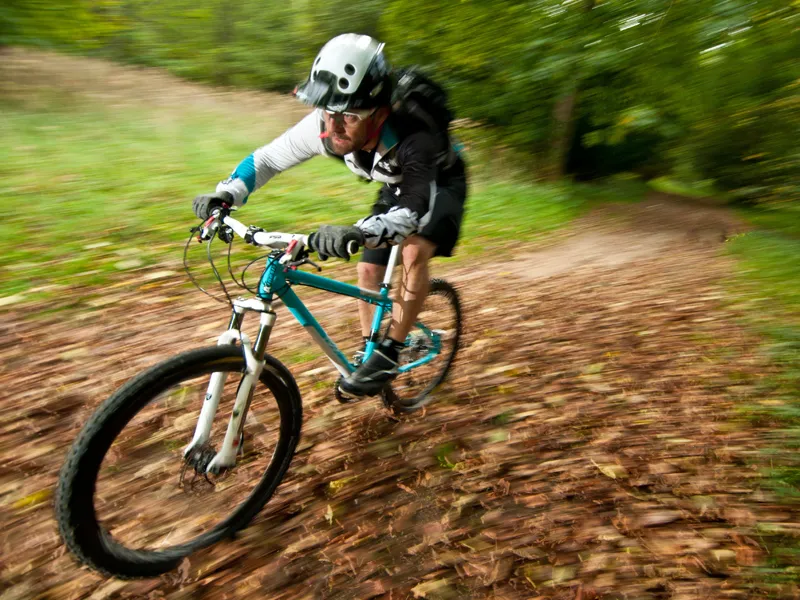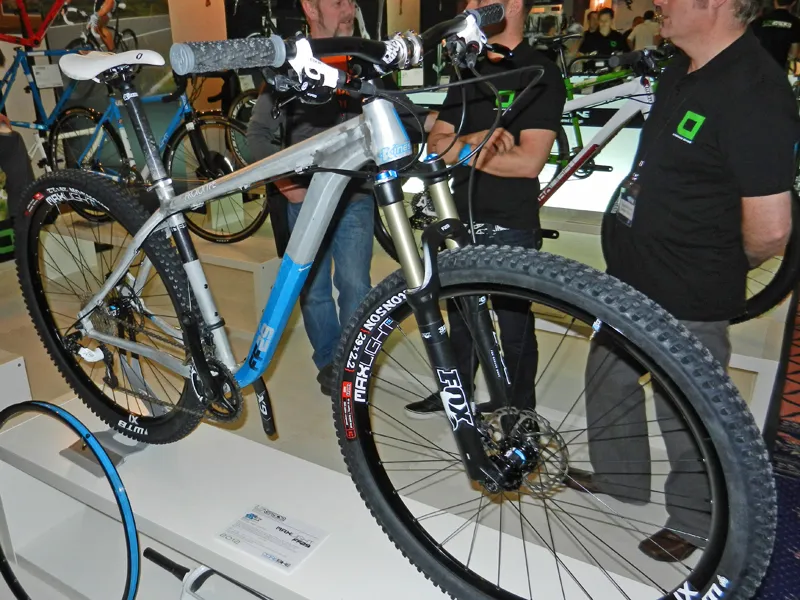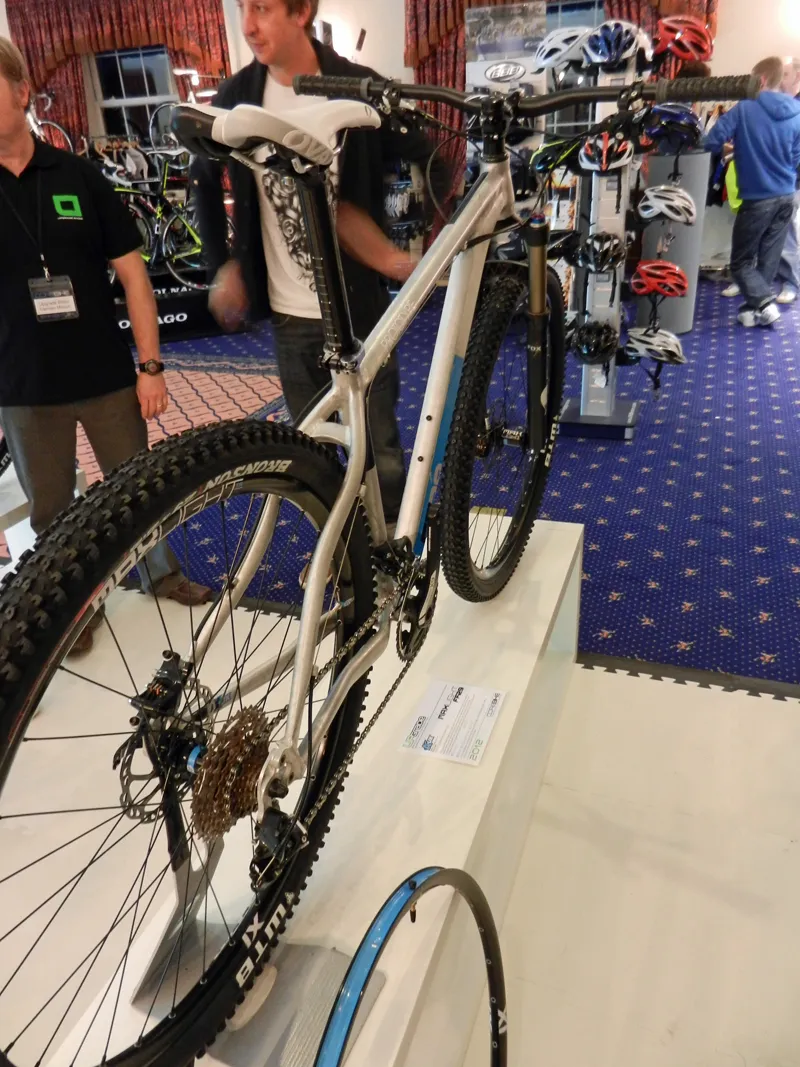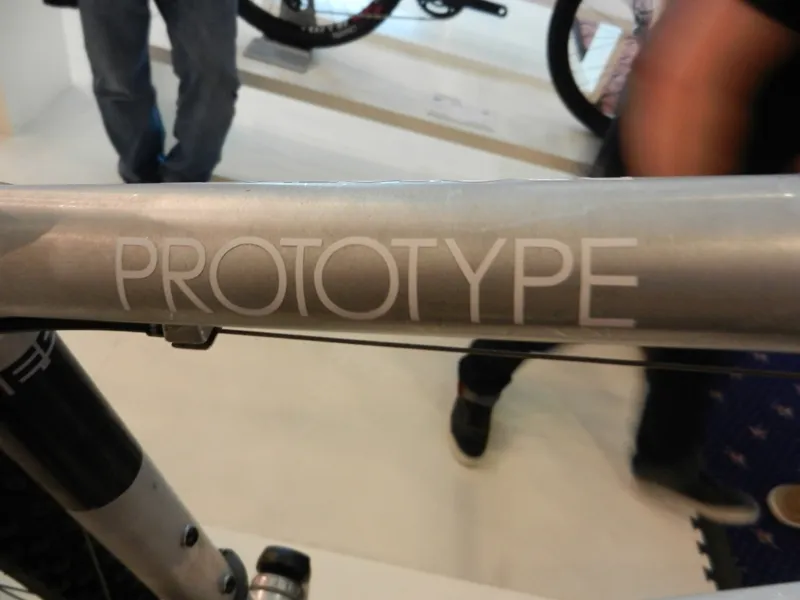What Mountain Bike editor Matt Skinner caught up with Dom Mason, creative director and bike designer at Kinesis UK, to talk big wheels, full-suspension, and disc brakes at the Tour de France. Here's what he had to say...
Matt Skinner: What made you 'believe' in the 29er thing finally?
Dom Mason: Up until recently I wasn’t convinced by the whole 29in argument. Big bikes with ponderous handling didn’t really seem to work for the type of riding that we're into or suit the Maxlight 'fast trail bike’ style. So a ‘Maxlight29’ was logged and went into the file marked 'Hmmm… interesting’.
The first time around, 29ers seemed to look and ride just like scaled up small-wheeled bikes. There was certainly something interesting going on but they just didn’t click with my thinking on what a bike should do. Some refinement and thinking was required with geometry and componentry.
Now, the movers and shakers have filled that evolutionary gap. New thinking on geometry and vastly improved suspension forks, wheelsets, tyres, headsets and also the acceptance of 2x10 drivetrains has turned the idea of the big-wheeled bike from an eyebrow raiser into a really exciting new branch on the riding tree. Now it’s worth sitting up and taking notice.
The wider availability of longer-travel forks and larger-volume tyres that aren’t designed solely for endurance racing was the catalyst that spurred me into action. Warp-speed, flowing singletrack, tempo-pace climbs and fast dips and crests are where the Maxlight frames excel. Twenty-nine-inch wheels are fast, so if we could harness that speed and work it into a ‘fast trail friendly’ package, we knew we might have a winner.
If a 29er is going to have the Maxlight name on it, it needs to take 2.2s with sideblocks, it needs a 100-120mm trail fork up front, and it has to be capable of being ridden aggressively. Hold on, don’t 26in bikes do all that rather well? Well yes, but speed is the key here. We know 29ers are capable of steamrollering trails and going rather fast over the bumpy downhill stuff, so adding a dollop of legendary Maxlight handling into the mix might just lead to a trail destroyer!
What's the thinking behind your 29er prototype, and what can you reveal about it?
I wanted to make a 29er that worked for more aggressive trail riding. Super-light weight and riding for hours round a circuit weren’t high on the tick list when I started thinking about a 29in frame worthy of the Maxlight name. Quick handling, fast trail prowess and big grins were firmly at the top. The 29in Maxlight, now called the Maxlight FF29 – you can make up your own ‘FF’ combinations – turned out to be one of the most difficult frames I've ever designed.
The 29er is a packaging nightmare. You know exactly where you want to put all the centres and contact points for it to ride right but there are many physical barriers to doing that. Key areas to get right are chainstay length, BB height, stack height and trail. The large wheel size throws up all sorts of problems you just don’t get with a 26in wheel, like front mech, chainring and toe clearance. As soon as you try to deal with them you run into handling issues and you're back to that ‘ponderous’ word again.
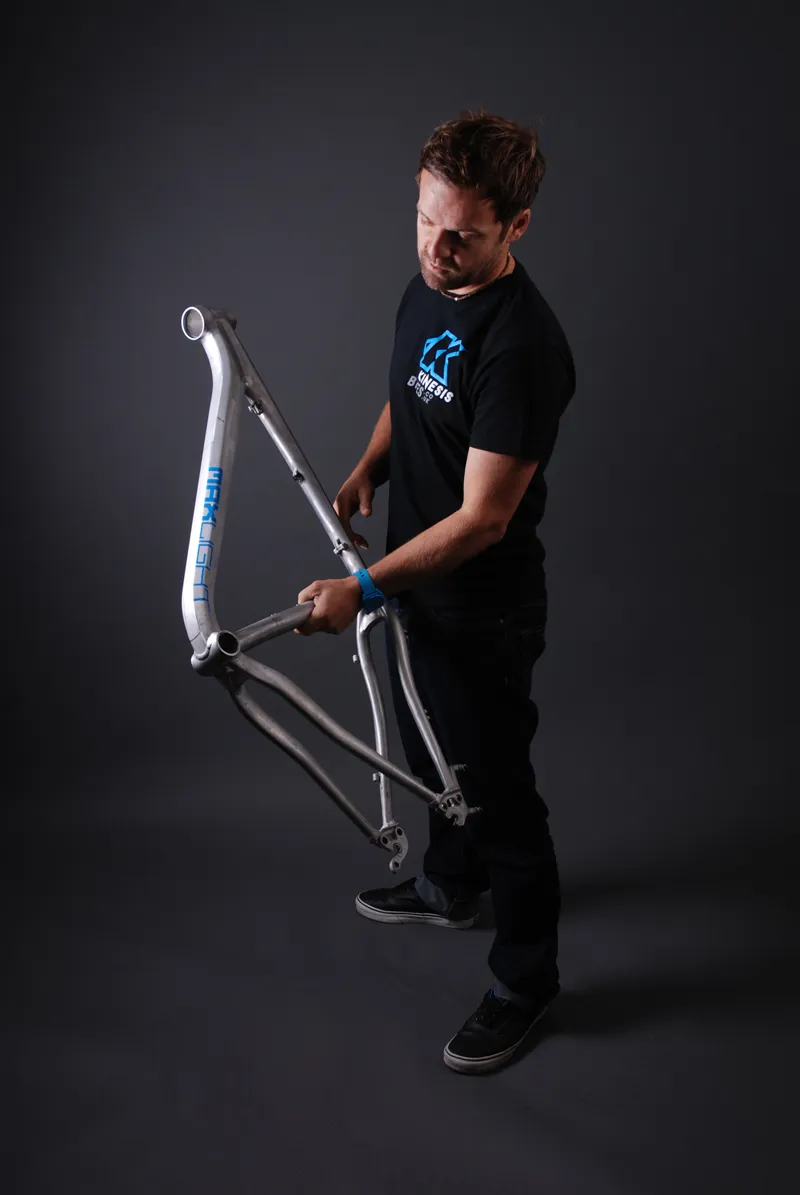
Dom displays the new Kinesis Maxlight FF29 29er – one of the most difficult frames he's ever designed, but worth the effort
The first prototypes felt wrong. They wouldn’t accelerate because the bars were in your chest, and manuals and wheelies were an effort because the rear-centre was too long. But although I was quite ready to throw my hands up and say, 'There, I told you 29ers were rubbish', it amazed me with how much fun it was to ride, really encouraging some playfulness and not what I was expecting from the 29er experience. So we moved to prototype numbers two and three.
I played with head tube lengths, front- and rear-centre dimensions, BB drop, dropout types, stay profiles and seat tube shapes. I found that by putting a 2.5° radius bend on the base of the seat tube I could increase mech clearance and tyre clearance, and shorten the stays to lighten up the front end. I’m dead against weird S-bend seat tubes or slack angles that move your saddle too far back.
BB height is now virtually the same as on a 26in Maxlight, and short head tubes with integrated 1.5in tapered headsets help keep the bars low. These factors are essential for stable cornering, strong acceleration and climbing. I settled on a medium length rear-centre as I felt it had the right combination of high-speed stability, manual-ability and tyre clearance. It also keeps the front wheel planted on steeper climbs.
I ditched swappable dropouts for a specially developed post mount dropout. 2x10 helped to sway this decision – it meshes well with the 29er ‘fast trail bike’ concept and helps out with clearance. A steep head angle keeps the trail dimension as close to a small-wheeled Maxlight as possible and ensures lively handling.
The prototypes were tested by as many riders as possible, including our Kinesis Morvélo Project riders, under all types of conditions and with many build types. There's a lightweight ‘XC race’ version with carbon stays out on the winter circuit – we'll hopefully introduce this for 2013.
The Maxlight FF29 will be in the UK for around Feb/March 2012. There'll be three sizes, although the small will be in limited quantity, and three colours. The pain and anguish of the colours and graphics is a whole other story… Price is still not fixed but will be around £500, and there'll be the option of ordering a package with a specific carbon fork or X-Fusion suspension fork, and possibly Reynolds' XC29er wheels.
Does wheel size actually matter?
Yes, certainly. If you take it to extremes and imagine your mountain bike with 20in wheels – assuming the geometry was designed to take them – you'd have a bike that accelerated like lightning and would relish the smooth, firm, tight stuff. But get it near rocks, ruts and roots, and you'd be off into the bracken! It would also get submerged when the going got bog-like. Huge wheels, on the other hand, would take an eon to spin up to speed and coax around corners but would iron out the bumps, take huge lean angles, glide over soggy bits and once you got them going, wouldn’t want to stop.
Twenty-six-inch wheels will always have their place, I don’t believe they'll die. They're better at accelerating and weaving through 'baby's head' size rock gardens, for example, and will always rule on super-tech, tight trails. For high-level XC racing though, I think that if you're on 26in wheels you're now at a disadvantage.
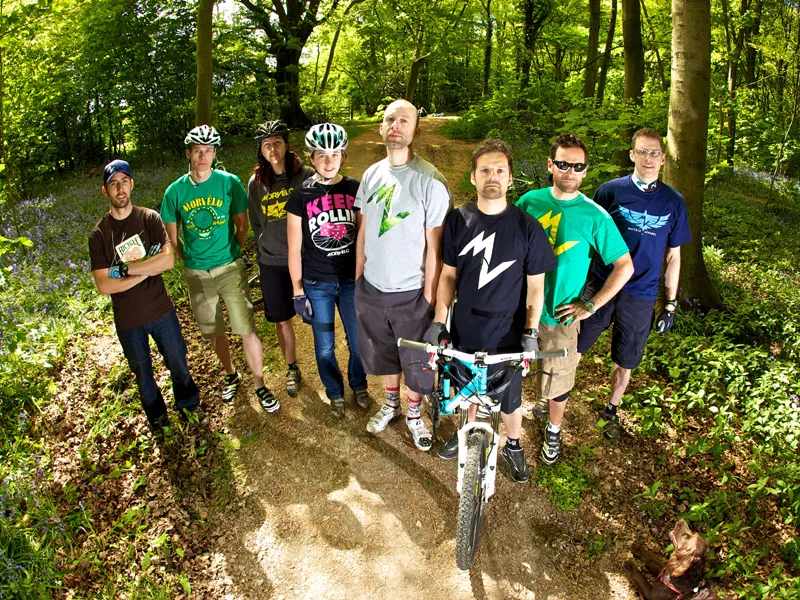
The new 29er was developed with help from the Kinesis Morvélo Project crew
Twenty-nine-inch wheels certainly bring a different aspect to riding, and with advances in wheel/tyre technology can now be light enough to spin up almost as fast as a mid-level 26in wheel. I wanted to harness the speed, handling and ‘steamrollering’ virtues, and build them into a frame that could wring every last bit of enjoyment out of the type of trails we ride. I hope I’ve done that. There's certainly a fashion aspect and ‘next big thing’ appeal to the 29er. The bike industry needs this and has embraced it.
There's still huge debate over the 29 v 26 thing but it’s always great to get people talking and if it inspires people to try something new, get back out on a hardtail and ride with their mates, then great! After an initial large dollop of scepticism, I;m convinced that they have their place in the riding landscape, just like the skateboard, or dreaded micro-scooter, started as a fashion craze and has now become engrained in riding culture.
How does the relationship between Kinesis UK and Kinesis International in Taiwan work?
They approached us in 1999 because they'd seen what Giant, who started as a frame building company, had become. They make frames and carbon forks for many well known brands and wanted to promote Kinesis as a brand name across Europe. In 1999 they only had five carbon forks to offer, so we started with these and quickly realised that we needed a frame to sell them with, so I designed my first frame!
It was called the Racelight R. It worked okay and sold okay, and made me realise I could put my engineering and riding background into frame design. Shortly after, I designed the first Maxlight, then the Crosslight CX frame and then the Racelight T winter trainer. Our Kinesis UK range now includes 18 framesets, four bikes and 12 forks.
We have a pretty special relationship with Kinesis International. They're the masters of alloy tube manipulation and design, and use the most advanced welding techniques. It’s fantastic to be able to work with them to develop tube shapes that work exactly for a frame design I have in mind, or pick from a vast catalogue of tubes and forgings for a new project or update. Tooling up for a new forging or carbon frame is very expensive, but by working in conjunction with Kinesis International we can afford to do it.
They're happy to use our riding and geometry experience, and we're more than happy to use their huge expertise in manufacturing. Our ADP (Advanced Development Project) frames, like the carbon Maxlight KM810, are made possible by this approach. We get to use the developed parts and tubes first, and then they can roll them out for other brands to use in their own way.
How long has your first full-suspension bike been in the pipeline for and what will set it apart from the crowd?
We've been playing with suspension ideas for as long as I can remember. It’s such a difficult area, because as soon as you've settled on an idea, technology moves on! The big boys are pushing suspension technology so hard that it’s tough to keep up. Kinesis make suspension frames for some of the best, so this year we've convinced them that it’s worth investing in some tooling to make our own.
Development is still in progress but I’m very excited to say that we're getting pretty close to finally having our first Kinesis UK full-suss frames, designed in conjunction with the Kinesis International engineers under our ADP programme. I have the first sample of a 100mm rear/120mm front 29er frame in my office right now. 100mm XC and 140/150mm AM frames are on the way. We hope to go into production mid-2012.
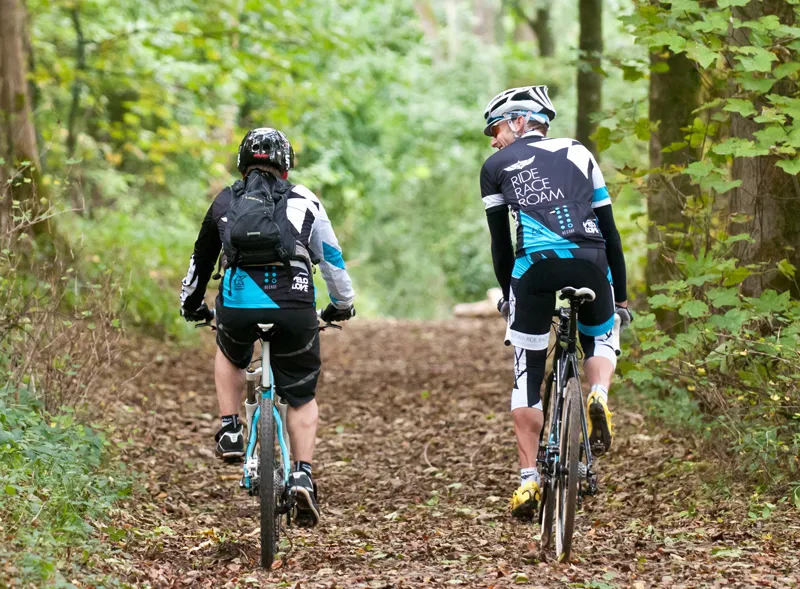
Dom (left) hits the trails with Jo Burt of Mint Sauce fame
Was 'mismatched' travel a 'must' all along, or an idea that's evolved?
I like the idea of getting over the front and taking out the big hits with a longer-travel fork, then getting some more feedback from the rear and using your legs to react to the terrain, so that’s the way we're going with it at the moment.
What’s your view on the effect(s), if any, of the tough economic conditions right now – on both the rider/consumer, and the industry?
When things get tough economically, the last thing that people will give up is their sport – their passion and escape. When times are hard these things take on even more significance and importance. We all know how precious and cathartic riding is in our lives. Sport and the objects of desire that surround it help give a feeling of security and purpose in testing times. Riders will hang on to their favourite bike long after selling everything else!
The bike industry is thriving at the moment. People are quick to realise that they really don’t need to take the car. It can be quicker to ride and, hold on… it’s fun! Beat the traffic jams and tighten those flabby muscles. More people are riding bikes out of necessity and then deciding they might ride at the weekend and trading up to something that performs better. The kids get involved and all of a sudden the whole family are out on the trails. More children will grow up with bikes in their lives, so long-term it looks good for cycling.
Is the Government doing enough to support British manufacturing and/or the bike industry?
The Government and our beloved banks could do more to support innovation in small businesses in the bike industry and to encourage entrepreneurship in startup businesses as a whole. More and more young people are willing to go it alone as their chances of employment dry up. If the bike industry continues on a high then there'll be more opportunity to become part of it and make an idea into a business. There's plenty of creativity and energy in the riding community. If lending dries up it’s going to be virtually impossible to kickstart a UK business that could be helping to underpin our economy in years to come.
Generally speaking, what have been the biggest dead-end trends you’ve seen over the years – things that promised to change everything but never did?
Hmmm, tricky. Here are a few I can think of: 20in-wheeled downhill and road race bikes; belt drives; mountain bike disc wheels; drop bars for mountain bikesd two-wheel drive; 24in rear wheels on downhill bikes; tiny narrow bars where your lever hoods touched in the middle; skinsuits for downhill; overuse of the word ‘Epic’; ‘Reverse Rise’ mechs; super-elevated stays and tucked-in rear wheels; Alpinestars style; Oakley 3 grips (ouch! Google ‘em); hydraulic shifting; solid tyres; elastomer suspension; suspension hubs; suspension pedals…
Conversely, what's been the most significant development?
Difficult to pin down one thing, but materials developments passed down from high-tech industries have always been a strong driver for the bike industry. Chromoly steel, titanium, scandium and manipulated alloy tubing have all been passed down and spurred huge advances in our industry. Carbon is a relative newcomer to bike design. I remember the distrust that many riders had for our Kinesis carbon forks 12 years ago! Now carbon's even found its way into downhill bikes and can be used for very highly stressed suspension parts.
The human can supply so little power, relatively, that any material that can deliver more energy to the wheel and lighten the bike has huge benefits in performance. So, yeah I guess advances in material technology will always offer the most significant developments in performance for bike design. Oh, and those 5kg jars of Nutella.
What’s on your radar as the one trend to watch, in 2012 and beyond?
Disc brakes in cyclo-cross is an interesting one. The new Crosslight Pro6 went down very well. Disc brakes for road race bikes will be next, as soon as the standards have settled… Boom! Discs make loads of sense for road bikes; it’s more about lightness in control and the related lack of fatigue where the benefits lie, rather than outright braking power. We're so used to discs in mountain biking that we've forgotten how bad rim brakes were. Also, all those precious carbon rims won’t be overheated and worn away; no doubt they can be made lighter to compensate. Discs will appear on the ProTour one day, for sure.
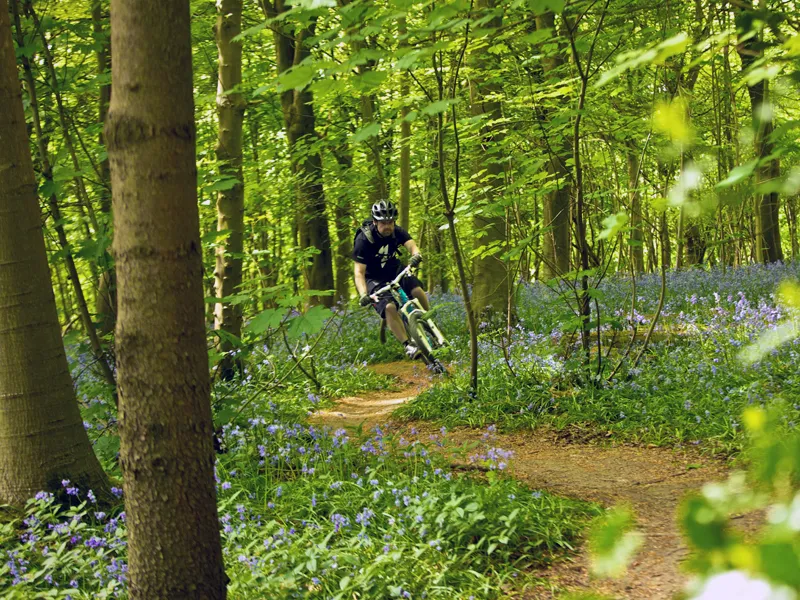
It's trails like this that keep Dom going; that and huge jars or chocolate spread!
What’s been your favourite bike event of the year, and why?
Eurobike is the best of the shows. I really enjoy the relaxed attitude there and the social aspect – you're actually allowed to ride bikes! It’s great to see what all the small European builders are up to and get a feel for the direction the industry is taking. There always seems to be a completely new brand with a 50-bike line-up every year, too. Weird.
For riding events, it’s got to be the Brighton Big Dog promoted by those fine chaps at Morvélo Bicycle Apparel and organised and manned by local riders. Great atmosphere and friendly racing.
What keeps you getting back in the saddle?
Riding is wonderfully freeing. The harder the riding situation, the more you have to focus on just that one moment. Thinking about the tax return is simply not possible when you're pushing your limits a bit. I’m never going to be a super-fit, race-winning athlete, but that's never been the draw for me. I like riding fast and pushing things until I get a little out of shape or making myself try something that I’m not sure I can do. Sessioning a spot, riding with friends and maybe crashing a few times are all part of the fun for me.
What's the best way you've found to conquer your demons out on the trail?
I tend to get a bit fixated on a riding spot and ride it again and again with a thousand-yard stare until I nail it and realise everyone else has ridden away. If it’s a drop or climb, I visualise myself at the bottom or crest and don’t think too much about how I'm going to get there, just imagine that I'm there already. Remembering to relax, look far ahead, drop my shoulders and heels and flow normally takes half the ride but when it all comes together on a tight, tree-lined fast and flowing trail, that’s when the demons are left behind. Until a tree reaches out and grabs your bars...
